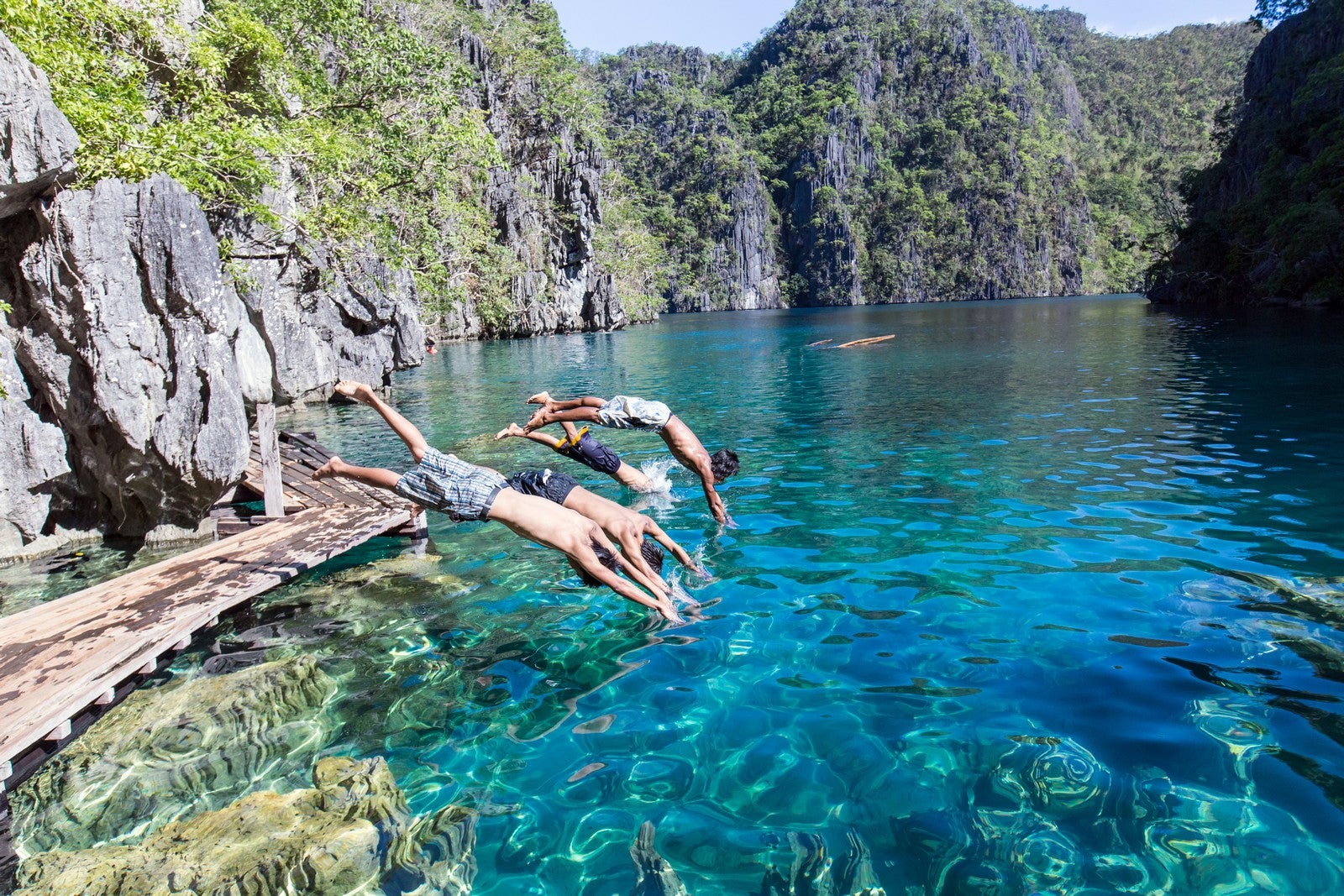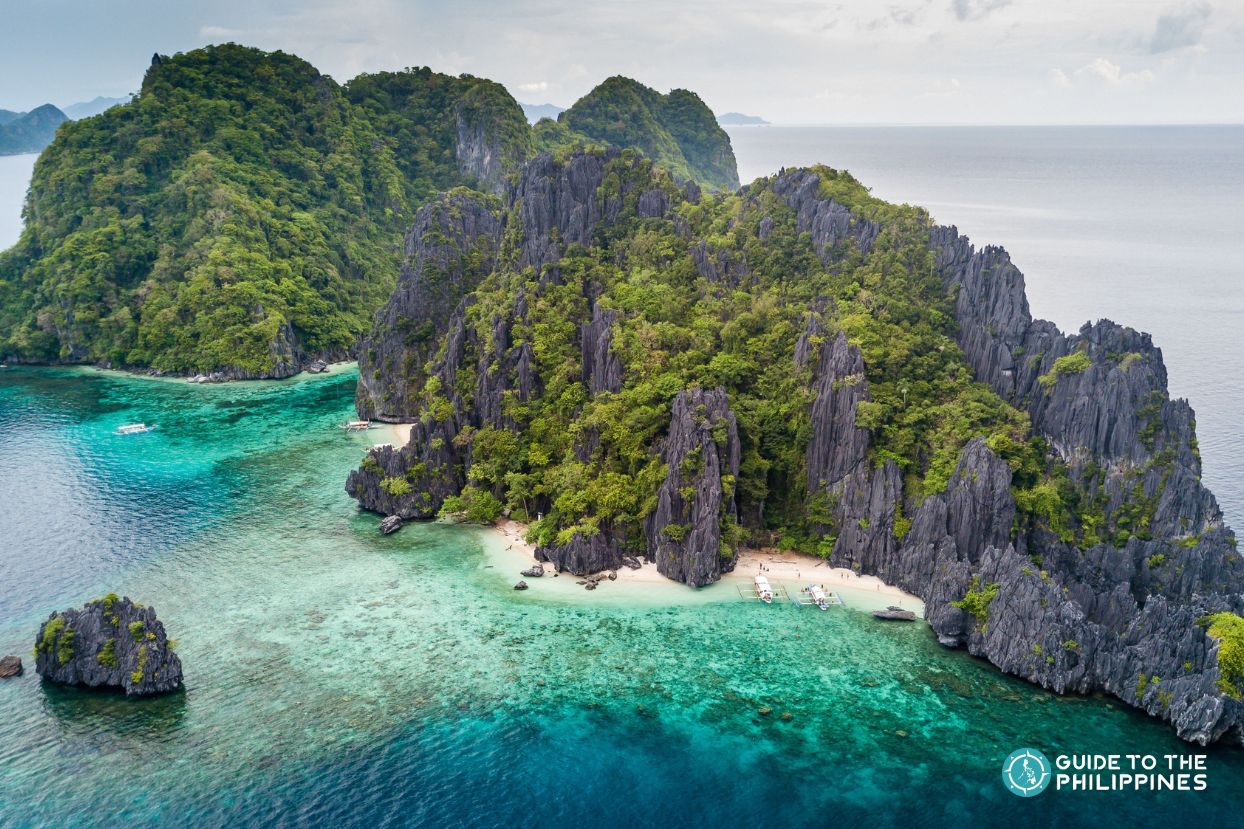Exploring the Philippines' pristine beaches is often at the top of the list when planning a trip to the country. However, beyond our crystal waters and fine powdery sands, our tropical nation is also home to various cultural and natural attractions that are rich in history.
Nine of the best tourist spots in the Philippines have been recognized internationally and are officially included in the UNESCO World Heritage Sites list. They range from important conservations sites such as the Puerto Princesa Underground River or the Subterranean River National Park in Palawan Island, the well-preserved Spanish-era Historic City of Vigan in Ilocos Sur, to the Rice Terraces of the Philippines in the Cordillera region of North Luzon.
Visiting all of these sites will give you a deeper look into the heritage of the different regions and will take you on a trip across the Philippine islands. In this article, we'll be digging into the historical and natural value of each of these nine sites and where you can find them during your trip to the Philippines:
9. Santa Maria Church (Ilocos Sur)
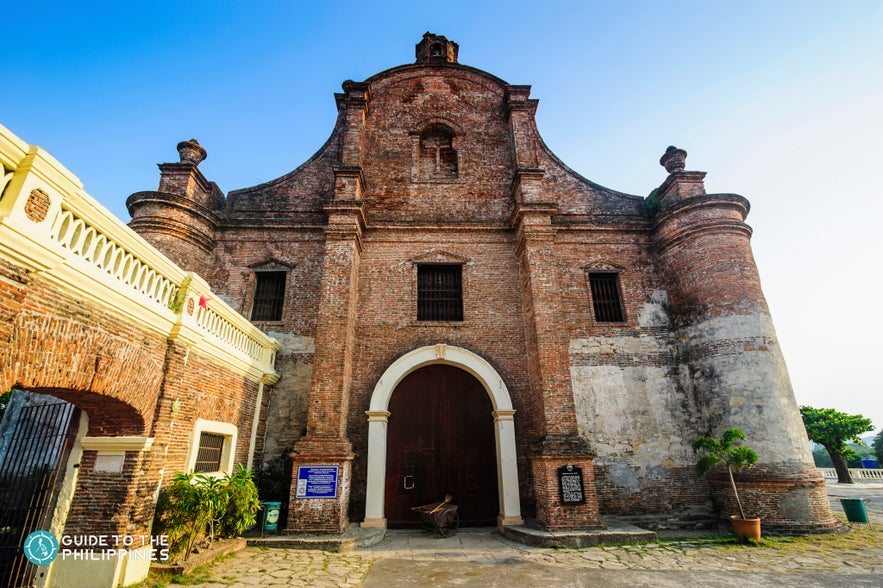
Situated in the coastal province of Ilocos Sur, the Santa Maria Church has gained recognition thanks to its impressive architecture. Ilocos Sur is situated in the northwestern region of Luzon Island and is bordered by Ilocos Norte to the north. Among its most noteworthy attractions included in an Ilocos itinerary are Calle Crisologo in Vigan City and the Bantay Church Bell Tower. Check out our list of the best Ilocos Norte Laoag hotels for your trip.
The Santa Maria Church was initially constructed as a more accessible chapel for its neighboring town to the north, Narvacan, in 1567. According to the local legends, the town's statue of the Virgin Mary kept disappearing from the first chapel and was seen on a guava tree atop a hill. Due to this, the locals decided to build another structure in 1765, which they later officially recognized as the Santa Maria Church.
It is this structure that stands today. A year later, this same church was made an independent ministry of the town instead of serving as a chapel-of-ease for Narvacan in light of many settlers moving to Santa Maria.
- Check out other top tourist spots in Luzon
Due to the locals' devotion to the Virgin Mary, the parish was also called the Church of Our Lady of the Assumption. The whole structure is surrounded by a defensive wall and features a Baroque style, which placed it on the World UNESCO Heritage Sites list.
The Santa Maria Church was designated as a World UNESCO Heritage Site in 1993 as part of a collection of four Spanish-era churches in the country, officially recognized as the Baroque Churches of the Philippines. Like the three other structures, the Santa Maria Church boasts intricate Spanish motifs that were ultimately finished using local materials instead of those typically used in Spain and neighboring European countries.
8. Miagao Church (Iloilo)
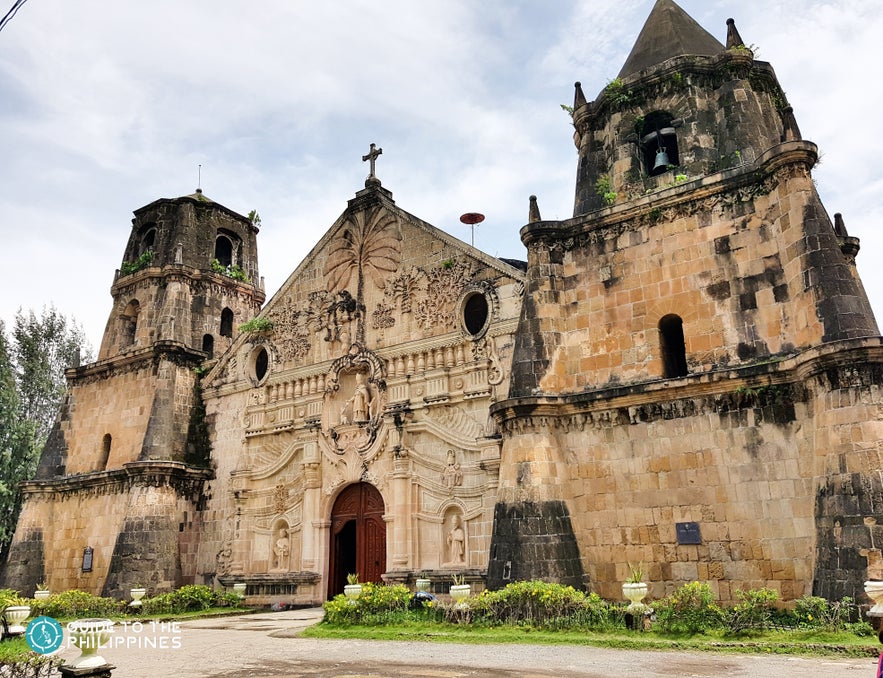
Standing majestically in the Miagao municipality of Iloilo in the Visayas region is another structure included in the Baroque Churches of the Philippines, the Miagao Church. Iloilo is a coastal province that boasts islands with powdery white sand, a picturesque countryside dotted with cultural attractions, and heritage towns that honor the province's traditions.
- Read our article on the top tourist spots in Visayas
The current structure of Miagao Church stands at the highest point of the town. It was finished in 1797 after ten years of forced labor under Spanish colonizers and was initially used as a fortress against potential invaders. Like the Santa Maria Church, it was designated as a UNESCO World Heritage Site in 1993 for its Baroque design mixed with notes of our local heritage. Its most noteworthy aspect is a relief sculpture of St. Christopher on the facade. In the stonework, the saint carries Jesus Christ on his back while holding onto a palm tree.
A trip here is never complete without heading to popular Iloilo tourist spots such as Islas de Gigantes, Garin Farm, Jaro Cathedral, and more. As for the local cuisine, tourists can feast on buckets of freshly-caught scallops and the province's famous La Paz Batchoy, a noodle soup with beef, chicken stock, and pork cracklings.
7. Mount Hamiguitan Range Wildlife Sanctuary (Davao Oriental)
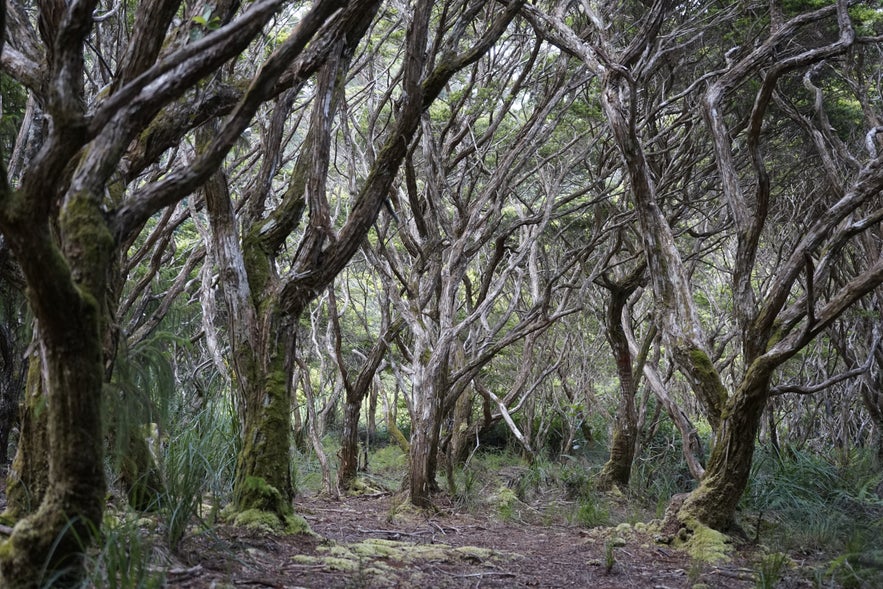
The Mount Hamiguitan Range Wildlife Sanctuary is a lush mountain ridge that sits in the province of Davao Oriental. Located along the southeastern portion of Mindanao Island, this province has an abundance of coconut trees and is the country's top producer of coconuts and dried coconut meat. Aside from its rich forests, it is also well known for the Aliwagwag Falls, one of the most scenic waterfalls in the Philippines and features over 130 cascades and multiple rock pools filled with turquoise waters.
- Read our article on the top tourist spots in Mindanao
- Read our article on travel insurance in the Philippines
With an elevation range of 75 to 1,637 meters above sea level, the Mount Hamiguitan Range Wildlife Sanctuary has become a safe haven for various animals and plants. Among the wildlife that finds solace in the mountain range are eight species that are endemic to the area, such as the Philippine eagle and the Philippine cockatoo.
Despite having an impressive elevation level, the range also features aquatic habitats, ultimately making it a diverse ecosystem. In recognition of the natural value of the sanctuary, it was formally named a UNESCO World Heritage Site in 2014.
6. Paoay Church (Ilocos Norte)

In the province of Ilocos Norte, you can find another of the four Baroque Churches of the Philippines called the Paoay Church. Also known as the San Agustin Church, it is situated about 19 kilometers from Laoag City, the province's capital. Along with the church, Ilocos Norte's fascinating rock formations and majestic sand dunes along its stunning coastline have drawn many tourists as well.
- Explore more of Ilocos Norte's natural wonders. Read our article on the best tourists spots in Pagudpud
Locals began building the Paoay Church in 1694 and finally completed construction in 1710. Its exterior walls were made from bricks and large coral stones. As with its fellow Baroque churches, the Paoay Church is characterized by the flying buttresses flank its sides and its wide base. Next to the church, a detached three-story bell tower was erected.
Throughout Philippine history, it had also served as a watch post from where local forces could keep an eye on invading forces such as the Spaniards in the 1800s and the Japanese armies during World War II. Due to its cultural significance, it was officially inscribed as a UNESCO World Heritage Site in 1993.
5. San Agustin Church (Intramuros, Manila)
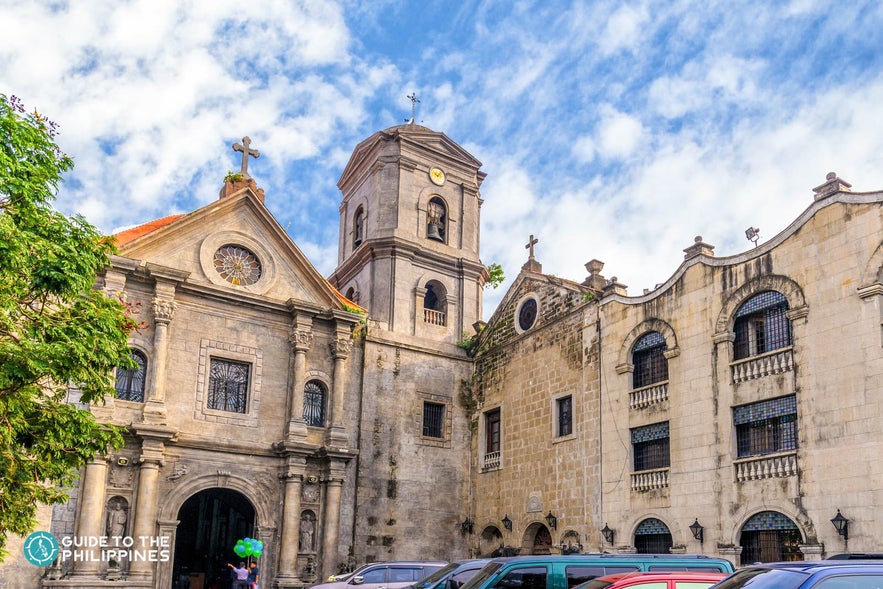
In the heart of Manila City, you can find the classic San Agustin Church towering in front of an open plaza in the walled district of Intramuros. This historical area was a political and military base for Spaniards when they colonized the country in the 1500s. Here, several cultural landmarks are maintained and offer physical spaces where visitors can immerse in the rich past of the Philippines.
- Read our article on the best historical destinations in the Philippines
The San Agustin Church remains one of the best testaments of Intramuros' heritage as it is considered the oldest stone church in the country. After its completion in 1607, parts of this Baroque structure were damaged by earthquakes and fights during World War II. The church's architecture is characterized mainly by its beautiful tromp l'oeil style ceiling and intricate altars.
- Check out our list of the best Manila tourist spots
After the death of Miguel Lopez de Legazpi, the first Spanish Governor-General that ruled the Philippines, he was buried close to the church's high altar. UNESCO named it a World Heritage Site in 1993.
4. Historic City of Vigan (Ilocos Sur)

Photo by Department of Tourism
A visit to Ilocos Sur is not complete without spending some time in the Historic City of Vigan. Known as the province's capital, this district now houses an array of attractions that honor both its past and present. In particular, the cobblestone street called Calle Crisologo is considered among the best tourist spots in Vigan City as it is lined with ancestral houses that date back to the Spanish era.
During the day, it is a bustling hub filled with stores selling native crafts. When the sun sets, it transforms into a stunning dining strip warmly lit by the street posts. Most restaurants feature alfresco dining areas where you can enjoy a nightcap while admiring the scene.
- Check out our list of the best hotels in Vigan
Despite the heavy Spanish influence in the city, Vigan also fuses certain practices gained from Chinese traders who eventually settled there. This is best seen in the crafting of clay jars, a practice that locals learned from Chinese migrants. A number of jar factories still operate in the city and follow the traditional method of molding them by hand.
UNESCO later recognized Vigan as the best-preserved example of Spanish colonial towns in Asia and named it a World Heritage Site in 1999. In 2015, Vigan City was also recognized as one of the New7Wonders Cities.
3. Tubbataha Reefs Natural Park (Sulu Sea)

Off the stunning shores of Palawan Island, you can find the Tubbataha Reefs Natural Park, a protected area in the middle of the Sulu Sea. Palawan and its surrounding waters have become a favored destination when diving in the Philippines due to the various aquatic ecosystems that thrive there. The whole island is home to lagoons and Palawan beaches containing thriving marine life just under the surface, such as sea turtles and schools of colorful fish.
The Tubbataha Reef sets itself apart, however, because it is a great example of an atoll or ring-shaped reef. The whole protected area comprises a 100-meter perpendicular wall, lagoons, and two coral islands.
In addition, this natural sanctuary houses large numbers of sea animals. Its North Islet, in particular, has become nesting grounds for marine turtles and sea birds. Scientists have found around 600 fish species, 360 coral species, 11 shark species, 13 dolphin and whale species, and 100 bird species in the area since they began visiting the reef in the 1980s.
Aside from being designated as a UNESCO World Heritage site in 1999, the reef was also nominated as part of the New 7 Wonders of Nature in 2008.
2. Rice Terraces of the Philippine Cordilleras (Ifugao)
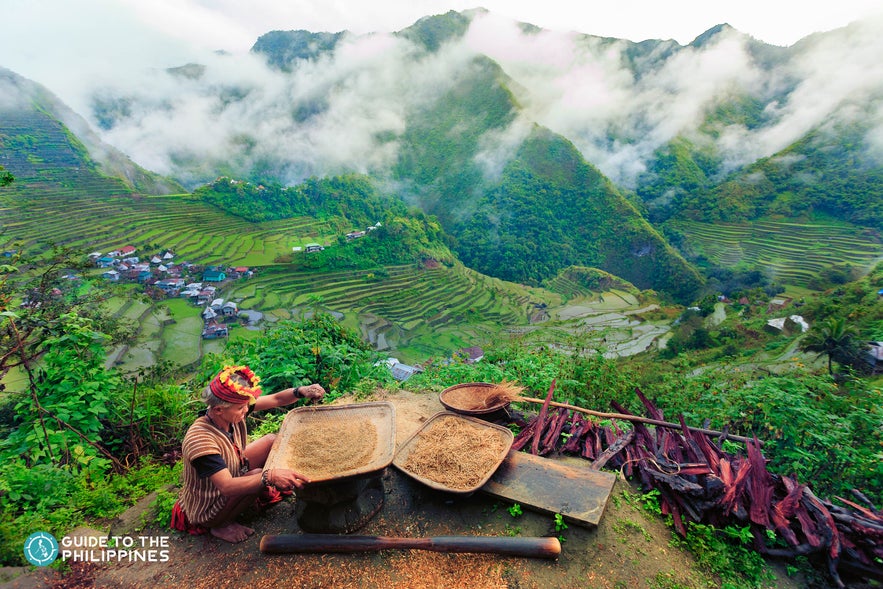
Nestled in the highlands of the Ifugao province in North Luzon are five rice terraces that not only serve as sources of food but as popular tourist attractions. These landscapes are located in the municipalities Banaue, Mayoyao, Hungudan, and Kiangan, with the Banaue Rice Terraces being the most popular one.
As a landlocked province, Ifugao is characterized by its lush mountain ranges containing river valleys and vibrant forests. Thanks to its location and high altitude, the locals here enjoy a generally cooler atmosphere than the rest of the country, making it a more optimal place to grow crops. Recognizing this, the tribe members eventually created intricate agricultural systems, which are now known as rice terraces in the Philippines.
These landscapes are estimated to have been around for 2,000 years and have often been revered as testaments to humankind's ability to adapt to the environment around them. The Rice Terraces of the Philippine Cordilleras were named a UNESCO World Heritage Site in 1995 in honor of the natives' beautiful work and their efforts to maintain and cultivate sacred traditions to this day.
1. Puerto Princesa Subterranean River National Park (Palawan)

Topping our list of UNESCO World Heritage Sites in the Philippines is the Puerto Princesa Underground River or Subterranean River National Park. This karst landscape that features an underground river measures over 8.2 kilometers and goes through a limestone cave with beautiful stalactite and stalagmite formations that resemble popular statues around the globe.
The cave's ceiling is also home to populations of fruit bats. While the cruise through the river already shows the beauty of the area, one of the river's most notable features is that it opens up directly into the sea. It is also one of the most beautiful caves in the Philippines.
- Read our article on the best hotels and resorts in Puerto Princesa
- See other tourist spots in Puerto Princesa
Aside from Puerto Princesa Underground River tours, travelers will also enjoy exploring the surrounding forests that are home to an array of animals and fauna. Among them are 15 endemic bird species such as the Palawan hornbill, the hill myna, and the white-breasted sea eagle. Meanwhile, the nearby coastal waters have become habitats for sea cows and hawksbill sea turtles.
UNESCO designated the Puerto Princesa Underground River a World Heritage Site in 1999, noting that the site contains a full "mountain-to-sea" ecosystem. Since then, the whole park has become the top Puerto Princesa tourist spot and has drawn many visitors to the island.
Palawan is also home to other world-renowned beach and island destinations like El Nido, Coron, San Vicente, and Port Barton.
Plan Your Trip to the UNESCO World Heritage Sites of the Philippines

When planning a vacation to the Philippines, consider visiting some, if not all, of the UNESCO World Heritage Sites. From the world-renowned Underground River in Puerto Princesa in Palawan to the majestic rice terraces in the highlands of Luzon, you will have more than a handful of attractions to see.
In between these iconic attractions, you can also take the time to visit other top tourist spots in the Philippines, like the highlands of North Luzon, beaches and islands in Palawan, and the natural wonders in Davao.
Whether you're hoping to spend a few days or a couple of weeks in the country, you can make the most out of your vacation by joining Philippines vacation packages that will take you on thrilling adventures across stunning provinces. Not only will you be treated to breathtaking sights such as our very own UNESCO World Heritage Sites, but you will also feel the warm hospitality of Filipinos wherever you decided to set up base during your vacation.



